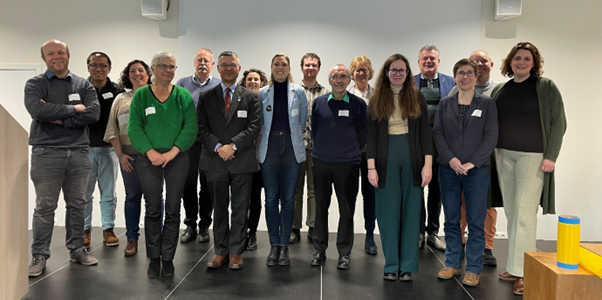SeaBioComp project concludes with identification of key applications for bio-based composites in the marine environment

SeaBioComp, a European Interreg 2 Seas project came to an end last month, having successfully developed and tested a number of bio-based thermoplastic composite materials, manufactured a variety of marine demonstrator products and compiled a commercialisation action plan to assess the technological and environmental advantages and identify key potential applications for the materials in the marine environment.
The motivation for the project has been to reduce the use of fossil-based materials in the marine sector by developing bio-based composites that have long-term durability with reduced CO2 emissions and environmental impact on the marine ecosystem. Early research in the project identified flax as the most suitable natural plant fibre to be used as reinforcement in the bio composite. During growth, flax absorbs a lot of CO2 and ‘cleans’ the soil through phytoremediation.
Project partners in the team, including research organisations, textile and composite specialists, universities, and cluster organisations, have been working together for the past 3 years to develop, mechanically test and research a number of biobased formulations using different manufacturing techniques. Details of the two different kinds of bio composites developed during the project, and the various manufacturing techniques and demonstrator products developed can be found here.
SeaBioComp has concluded that components made from bio-based thermoplastic composites can offer reduced weight to achieve a given tensile or bending strength which can be beneficial in reducing the overall weight of a structure. Another key performance advantage of flax based bio composites lies in the increased structural damping provided by the flax fibre replacement. The project has demonstrated that this can be beneficial in applications where noise and vibration reduction could be an issue.
The potential environmental advantages of the bio-composite materials have also been assessed by the project and include lower carbon footprints, the switch from fossil resources to biosphere, the better recycling properties of the materials and the significantly reduced micro-plastic degradation compared to conventional polymers.
The project has looked at a number of potential applications for SeaBioComp technologies across the blue economy as well as assessing issues such as long term durability, material costs, supply chain capacity and future actions required to take the technologies forward. Drifting buoys and interior cabins/hatches/panels are proposed to be potential early adopters of the bio-based materials.
Commenting on the project achievements, Isabel de Schrijver comments, “The use of biopolymers is often viewed with suspicion, but the SeaBioComp project has shown that these materials can indeed play an important role in the future. New developments in this field should definitely be further encouraged. Thanks to the unique collaboration within the project, we have gained a better understanding of the chemical and physical properties of biocomposites and their behaviour in the environment. This knowledge is indispensable and will be an important source of knowledge for our companies.”
The project has released a series of technical leaflets detailing the various production methods using self-reinforced biocomposites and flax based biocomposites for marine applications, including compression moulding, monomer infusion and additive manufacturing. These technical leaflets will be of interest to manufacturers of marine products as well as supply chain companies and the academic sector and are available as downloads from the project website: http://www.seabiocomp.eu/downloads/


